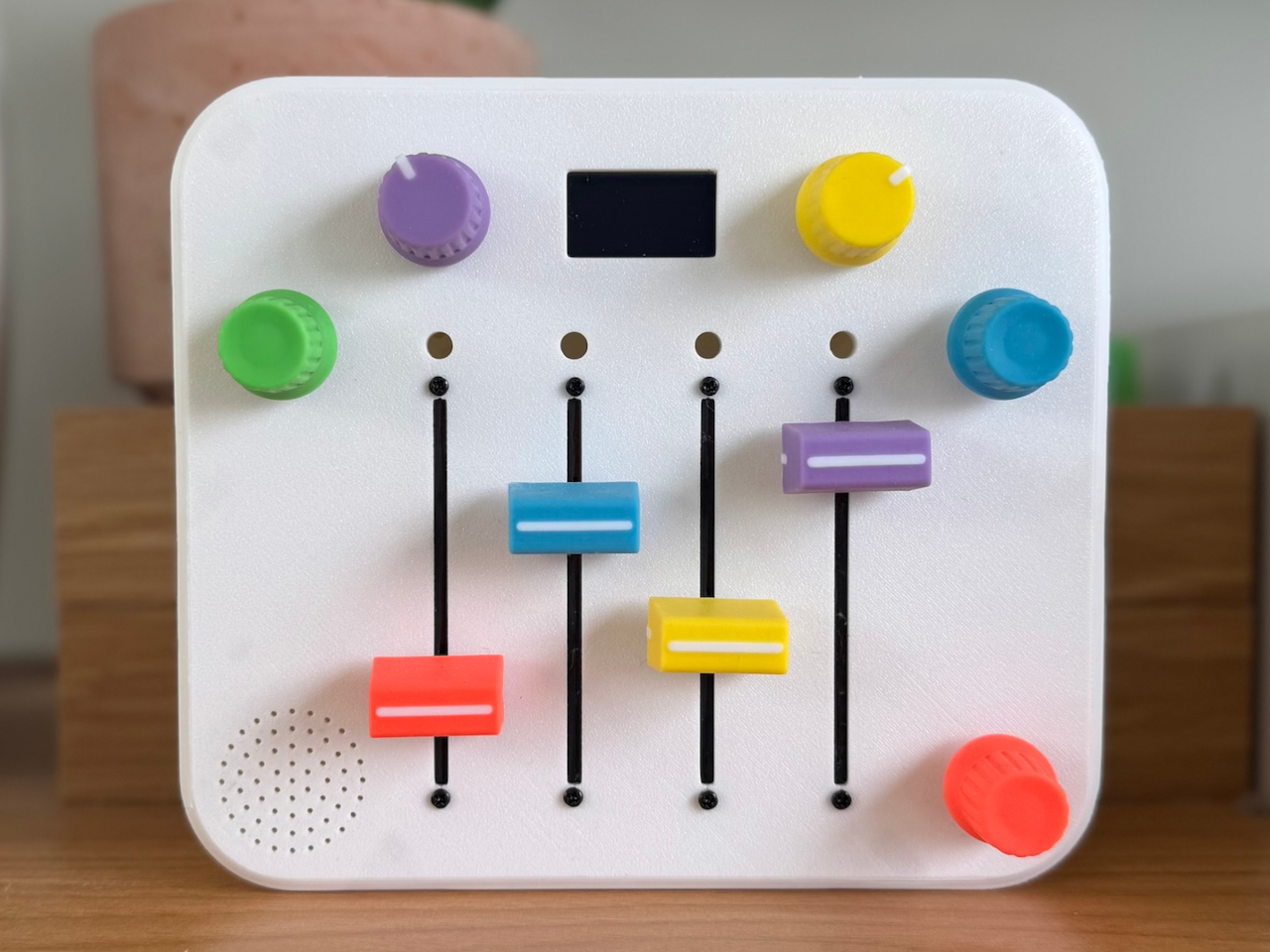
"A father built a portable synthesizer for his daughter's third birthday, and the result looks almost too polished to be a first electronics project. It's a four-step sequencer with sliders instead of keys, designed so a toddler can make looping melodies just by moving colorful controls. The synth is as much a design and learning story as it is a music gadget, documenting what happens when someone jumps into hardware with no experience and a clear deadline."
"The finished synth is a rounded square box in pink or white, with four vertical sliders in bright colors and four matching knobs at the corners. Slide up for higher notes, down for lower, while a tiny OLED screen shows a dancing panda. There are no menus or hidden modes, just a looping sequence that keeps playing while little hands experiment with pitch and tempo, creating simple melodies that shift and evolve with every adjustment."
"Roberts started on a breadboard, then realized he needed a proper enclosure that his daughter could actually hold. Off-the-shelf cases were the wrong size and the wrong colors, so he opened Fusion 360 for the first time and slowly modeled a custom shell. A friend's 3D printer turned those sketches into a real, toy-like enclosure that feels closer to a commercial product than a hack, complete with rounded corners and smooth edges."
A portable, toddler-friendly synthesizer combines a four-step sequencer with colorful vertical sliders and four corner knobs to let young children create looping melodies by moving controls. A tiny OLED displays a dancing panda and the interface avoids menus or hidden modes, keeping playback continuous while pitch and tempo are adjusted. The idea originated from a Montessori activity board of switches and LEDs and drove learning in microcontrollers, CAD, PCB design, and 3D printing. Development progressed from breadboard prototyping to a 3D-printed custom enclosure modeled in Fusion 360, then to a printed circuit board after hand-wiring proved fragile.
Read at Yanko Design - Modern Industrial Design News
Unable to calculate read time
Collection
[
|
...
]